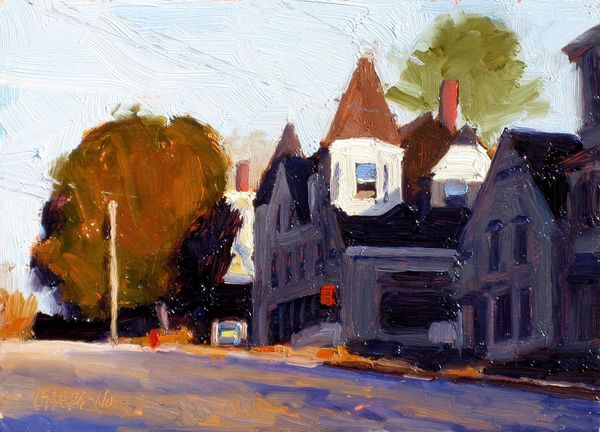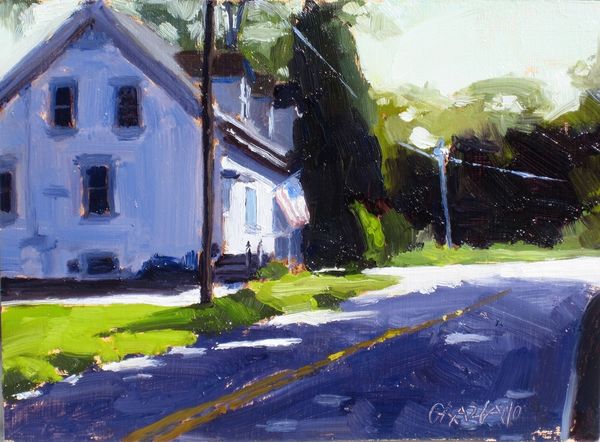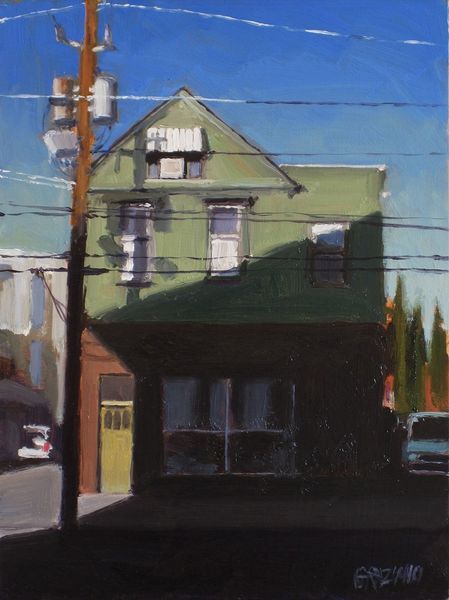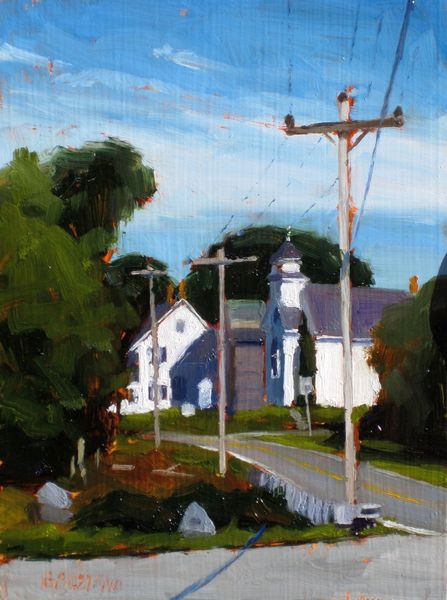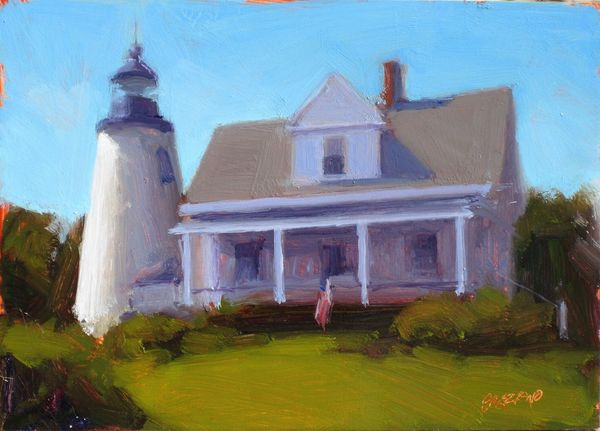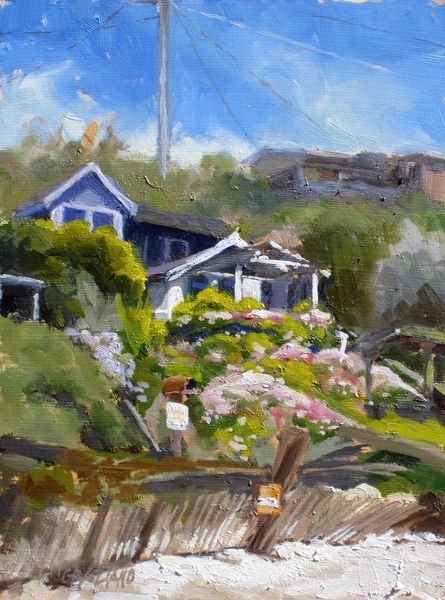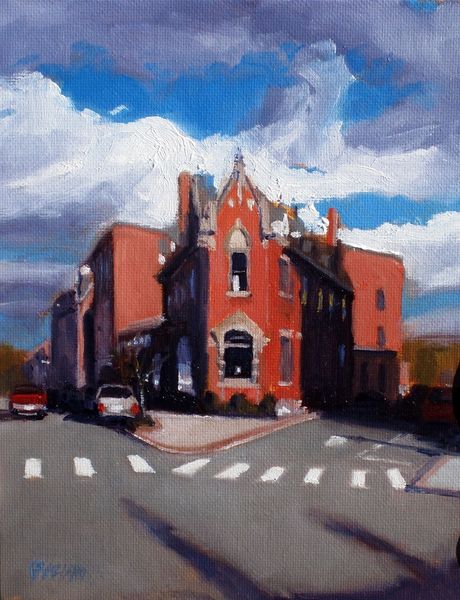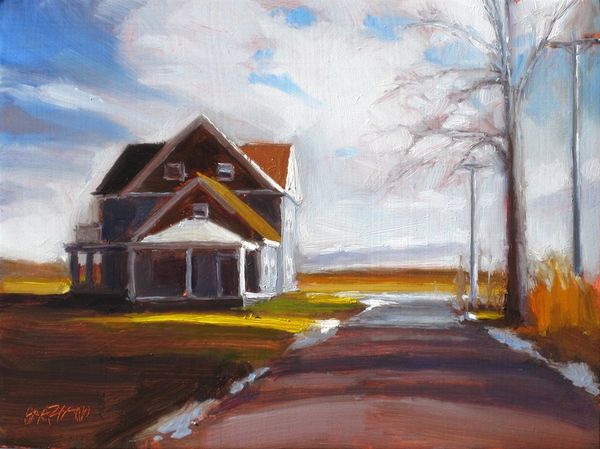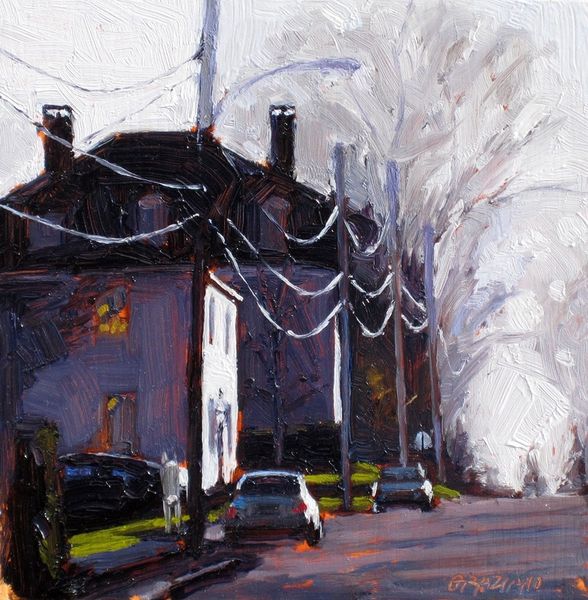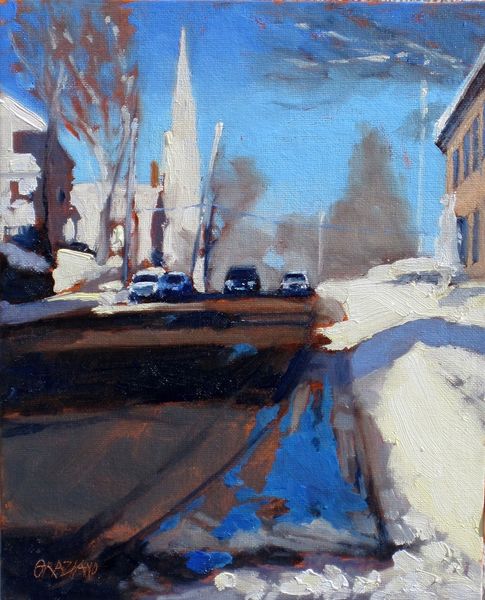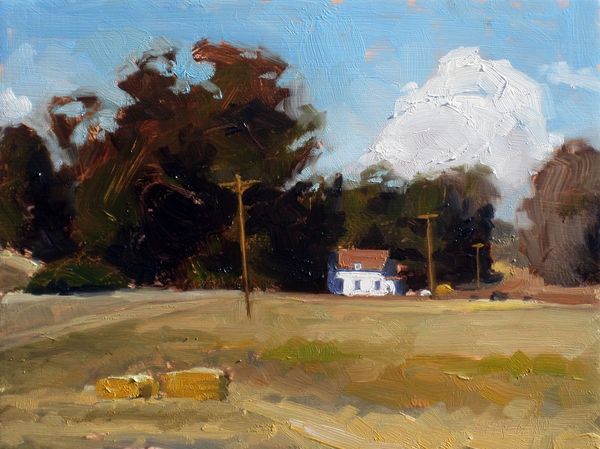
plein-air, oil-paint
#
impressionism
#
plein-air
#
oil-paint
#
landscape
#
impressionist landscape
#
oil painting
#
cityscape
#
post-impressionism
Copyright: Modern Artists: Artvee
Curator: Here we have Dan Graziano’s painting, “Long Shadows.” Graziano works in the tradition of plein-air painting, which means he painted this work outdoors, directly in front of his subject. Editor: My first thought is how immediate it feels. The colors are bold, applied quickly, capturing the fleeting moment, that time of day when the shadows really stretch out. It is also kind of gritty. Curator: Exactly. His commitment to plein-air positions him within a fascinating history of artists engaging directly with their environments. These kinds of everyday scenes reflect modern life in small towns across America. I mean, we see these buildings and utility poles every day. They reflect us and our societies, how our towns and cities developed. Editor: I'm intrigued by how those electrical poles are as prominently featured as that turreted house on the right. Graziano is using simple materials – oil paint on canvas – to highlight this contrast between the pre-electric era of ornate houses and our current interconnected society. I love how he gives equal weight to the tangible structure of the built environment and infrastructure of power. Curator: Well, it brings up interesting questions about taste and class, doesn't it? Why paint these sorts of subjects? This might have something to say about how taste shifted over time and changed our ideas of "high" art. There’s a clear break with the Hudson River School idealization of landscape, that’s for sure. Editor: Absolutely. It forces us to question how we define and value art. It pushes against this conventional ideal that is historically prized within the established art world and offers the idea that a common scene, rendered with visible brushstrokes, with paint, can have as much if not more artistic merit. What kind of labor goes into making a scene so relatable? What commentary are we consuming alongside that product? Curator: This painting does so much with just a few, almost fleeting brushstrokes and reminds us of art's capability to reflect who we are now, today. Editor: Agreed. It reminds us of the simple fact that the materials, the craft, the labor itself are inseparable from the cultural statements being made.
Comments
No comments
Be the first to comment and join the conversation on the ultimate creative platform.
